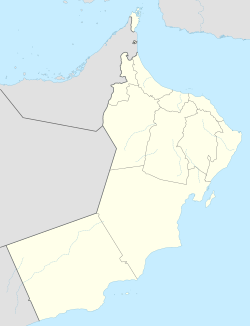Sarfait | |
|---|---|
| Coordinates: 16°41′2″N53°6′46″E / 16.68389°N 53.11278°E | |
| Country | |
| Governorate | Dhofar |
Sarfait, also transcribed as Sarfayt or Sarfeet, is a settlement in the Dhofar Governorate of Oman on the coast of the Arabian Sea, near the border with Yemen. There is an international border checkpoint at Sarfait; on the Yemeni side of the border is the settlement of Hawf.
